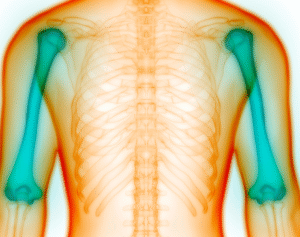Introduction to Facial Symptoms in Fibromyalgia
Fibromyalgia is widely known for causing widespread musculoskeletal pain, fatigue, and cognitive challenges. However, one of the lesser-known aspects of this condition involves facial symptoms. Many individuals with fibromyalgia report discomfort and strange sensations in the face, yet these are often misdiagnosed or ignored. The face is an intricate region full of nerves, muscles, and sensory pathways, all of which can be affected by the central sensitization that characterizes fibromyalgia.
Recognizing how fibromyalgia manifests in the face is important for both patients and healthcare providers. These symptoms may seem disconnected from the broader fibromyalgia diagnosis, but they form part of the complex web of dysfunction in the nervous system that this condition creates.
Facial Pain and Pressure
One of the most common symptoms of fibromyalgia in the face is persistent or intermittent pain. This discomfort may be localized in specific areas such as the cheeks, jawline, around the eyes, or across the forehead. The pain is often described as dull, aching, or even sharp and stabbing in nature. Some individuals report a feeling of intense pressure or tightness, as if something is pushing against their face.
This type of facial pain is not caused by an injury or infection, which makes it confusing for both patients and doctors. It may feel similar to sinus pressure or tension headaches but lacks the typical signs associated with those conditions.
Jaw Pain and Temporomandibular Joint Dysfunction
Fibromyalgia frequently overlaps with temporomandibular joint dysfunction, commonly known as TMJ or TMD. The temporomandibular joints connect the jawbone to the skull, and when these joints become inflamed or misaligned, they cause significant pain in the jaw and surrounding areas.
People with fibromyalgia may experience a popping or clicking sound when opening their mouths, difficulty chewing, or stiffness in the jaw muscles. Morning jaw pain or nighttime teeth grinding can also be signs that fibromyalgia is affecting the facial region through its impact on muscular tension and nerve sensitivity.
Tingling, Numbness, and Burning Sensations
Many individuals with fibromyalgia experience paresthesia, which includes tingling, burning, and numbness sensations. When these symptoms occur in the face, they can be particularly distressing. Common areas include around the lips, nose, cheeks, and forehead.
The sensations may feel like pins and needles, a crawling feeling under the skin, or sudden bursts of burning. They often come and go without any obvious trigger, and traditional nerve tests may not show abnormalities. These sensory disturbances are linked to the dysfunctional pain processing that occurs in fibromyalgia rather than nerve damage itself.
Facial Sensitivity to Touch and Temperature
People with fibromyalgia often develop a heightened sensitivity to sensory input, a condition known as allodynia. When this occurs in the face, even light touches such as a gentle pat, the application of makeup, or the wearing of glasses may become painful or irritating.
In addition, temperature changes can trigger discomfort. Exposure to cold wind or direct sunlight may cause stinging, throbbing, or burning sensations. This increased facial sensitivity is the result of how the brain interprets sensory signals, making harmless stimuli feel painful.
Headaches Originating from Facial Tension
Tension headaches and migraines are frequent complaints among those with fibromyalgia, and they are often linked to facial symptoms. Tightness in the facial muscles, particularly around the eyes and jaw, can radiate upward into the scalp, contributing to these headaches.
Some people describe a band-like pressure around the forehead or an intense throbbing behind the eyes. These headaches may last for hours or days and significantly affect focus, mood, and energy levels.
Difficulty with Facial Movements
Although rare, some individuals with fibromyalgia report difficulty making facial expressions or moving certain facial muscles. This is not due to nerve paralysis, but rather to muscle stiffness, fatigue, or discomfort. Smiling, frowning, or speaking for long periods may become tiring or uncomfortable.
While this is not a primary symptom, its occurrence can lead to concerns about neurological conditions, underscoring the need for comprehensive assessment by knowledgeable healthcare providers.
Dryness and Skin Changes
Facial skin issues are another subtle but frustrating symptom of fibromyalgia. Some people experience dry, flaky skin on their cheeks or around their eyes and lips. Others may notice changes in skin color or texture, such as paleness or a flushed appearance.
This could be due to dysregulation of the autonomic nervous system, which controls moisture levels, temperature, and blood flow in the skin. Facial dryness may also be linked to coexisting conditions such as Sjögren’s syndrome, which often overlaps with fibromyalgia.
Impact on Daily Life and Emotional Health
Facial symptoms can significantly impact daily activities and quality of life. Pain while eating, sensitivity to light wind, or difficulty applying skincare products may sound minor, but they can compound the stress already caused by fibromyalgia’s other effects. This constant discomfort in such a visible and expressive part of the body can also affect confidence, social interaction, and self-image.
Many people feel isolated or dismissed because these symptoms are invisible and hard to quantify. Validation and understanding are essential to coping with the burden of facial fibromyalgia symptoms.
FAQs on Symptoms of Fibromyalgia in the Face
1. Can fibromyalgia cause facial nerve pain?
Yes, fibromyalgia can lead to facial pain and discomfort due to central nervous system sensitization, although it does not damage the facial nerves directly.
2. Is jaw pain related to fibromyalgia?
Jaw pain, particularly due to TMJ dysfunction, is commonly associated with fibromyalgia and often presents alongside other facial symptoms.
3. Why does my face feel tingly with fibromyalgia?
Tingling or numbness in the face is caused by altered pain perception in the nervous system, a common issue in fibromyalgia known as paresthesia.
4. Are facial symptoms constant in fibromyalgia?
Facial symptoms may be intermittent or flare up with stress, fatigue, or environmental triggers, varying from person to person.
5. Can fibromyalgia cause difficulty moving facial muscles?
Some people report stiffness or fatigue in facial muscles, though this is not due to paralysis but to muscle sensitivity and central nervous system dysfunction.
6. Should I be worried if I have facial pain with fibromyalgia?
Facial pain is a recognized symptom, but it’s important to rule out other conditions with similar symptoms through a proper medical evaluation.
Conclusion
The symptoms of fibromyalgia in the face are subtle, varied, and often misunderstood. From persistent facial pain and jaw discomfort to tingling sensations and sensitivity to touch, these signs reflect the deeper neurological disruptions caused by fibromyalgia. Recognizing and addressing these symptoms can improve both diagnosis and daily management. A comprehensive and compassionate approach is key to supporting individuals who experience this often-overlooked aspect of a challenging condition.



